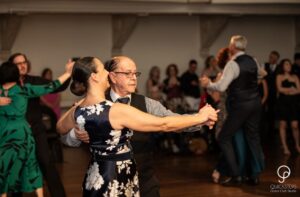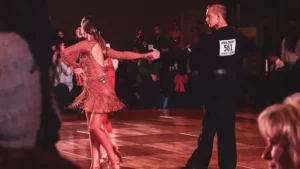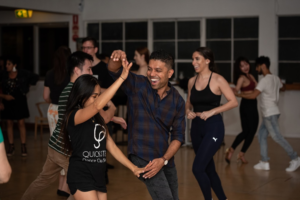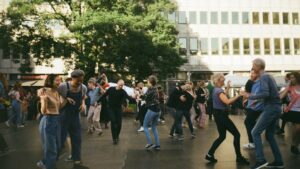Learn about Salsa in 60 seconds
The music, the rhythm, the way it makes you feel… just watching Salsa gets your heart pounding.
Every time you see people Salsa, your body cries out to join in – the soul of Latin America is within you, wanting to break free on the dance floor.
It may look hard, but Salsa is all about feeling the music and getting your body into the rhythm.
The Magic of Salsa
You can feel it. The moves are magical, and you’ll get the hang, twist and turn of them quicker than you think.
Like all dances, salsa takes practice – the more you give yourself to it, the more you’ll feel at one with the moves. It’s fun, it’s joy, it’s celebration – it’s a margarita in heels.
The History of Salsa
The origin of the name salsa is surrounded by controversy. Some believe that the term was created by record labels to better market their music. They chose the word ‘salsa’ because of its hot and spicy connotations. Others believe the term came about because the dance and the music is a mixture of different styles, just like salsa or ‘sauce’ in Spanish is a delicious blend of different ingredients. Some claim that it was based on a cry shouted by musicians while they were playing their music.
The style made popular in New York in the mid-1970s is the style we tend to dance today. It evolved from earlier dance forms such as son, son montuno, Cuban cha cha cha and Cuban mambo which were popular in Cuba and other parts of Latin America at the time. Salsa, like most music genres has gone through a lot of changes over the years and incorporated elements of swing and hustle, as well as elements of some traditional Afro-Cuban and Afro-Caribbean dances.
Songs you didn’t know you can salsa to
There are plenty of songs that you already know that you can Salsa to! Still wondering? Here are 4 example salsa songs, but you don’t have to stop there!
There are plenty of popular musicians that simply love to make songs in Salsa rhythm. For example: Santana, Ricky Martin, Pitbull, Beyoncé, Christina Aguilera, Maroon 5. They have all put out songs with the appropriate beat and made them popular. On the other hand, you’ll hear a lot of non-salsa songs remixed for Salsa!
Shakira – Hips Don’t Lie
Enrique Iglesias – Bailando
Ricky Martin – Dame Mas
The Rubens – Hoops
This is how we dance Salsa at QuickSteps
QuickSteppers: Caitlin & Rommel
Event: QS Summer Ball 2017
Song: Tres Semanas by Yiyo Sarante
Info: Fantastic salsa routine performed by gorgeous Caitlin and our fabulous teacher Rommel!
Hmmm, but…
-
Is salsa too hard for me to learn?
Salsa can appear difficult with its quick spins and fast footwork but it is no harder to learn than any other dance, so long as you are taught in a structured manner and are learning in a way that is right for you.
There are many different schools teaching salsa so it’s hard to know where is best for you. In general salsa schools can be separated into two types – those who team mainly in big group classes, and those who teach through a combination of private and group classes.
QuickSteps recommends private dance classes for learning core salsa step patterns and technique, complemented with group classes for extra practice and repetition.
Read on if you are looking some styles of dance to learn alongside your salsa for variety and to speed up your learning.
-
Which style of salsa should I learn? L.A. Style or Cuban Style?
This really depends on whether you have ever done any dancing before and where you would like to use your dancing. We recommend learning both styles as this is the most fun and gives you the best of both worlds.
L.A. Style is the easiest to learn, so best if you don’t have any previous dance experience.
If you are travelling to Latin America you will certainly need some Cuban style moves too. However your leading/following is where most of your focus should be, rather than learning any particular step patterns or styles.
To read more about the differences between L.A and Cuban click this link. Happy researching!







